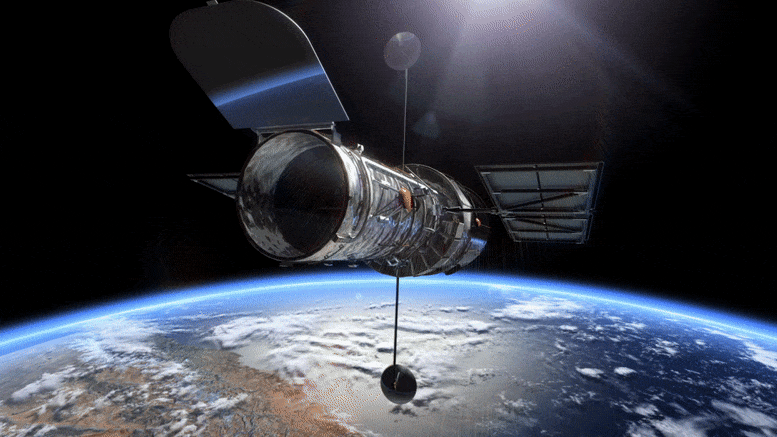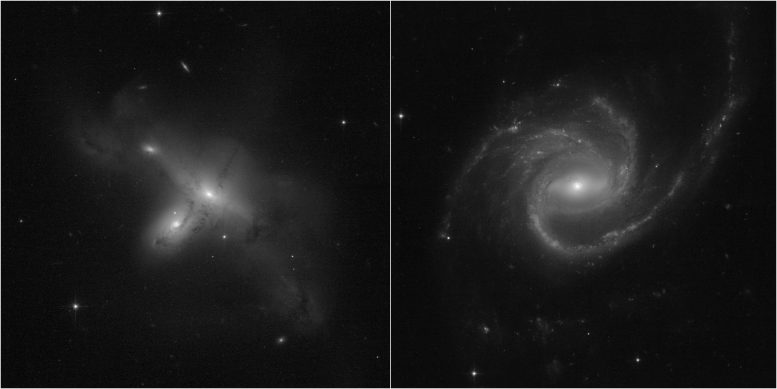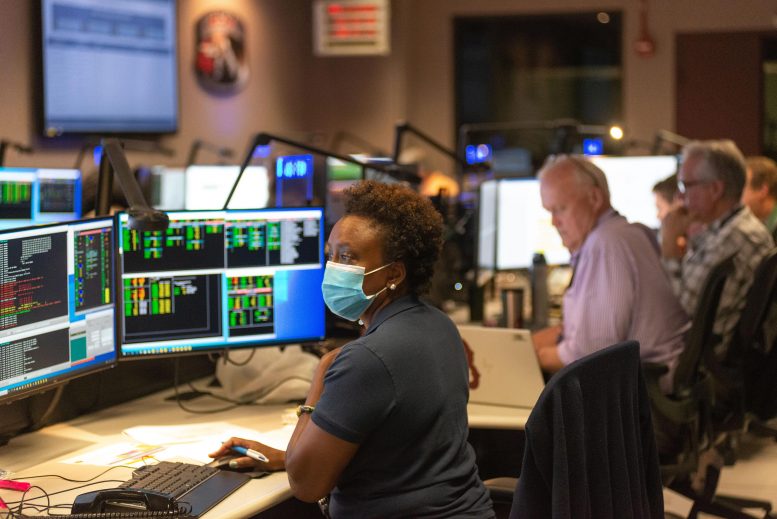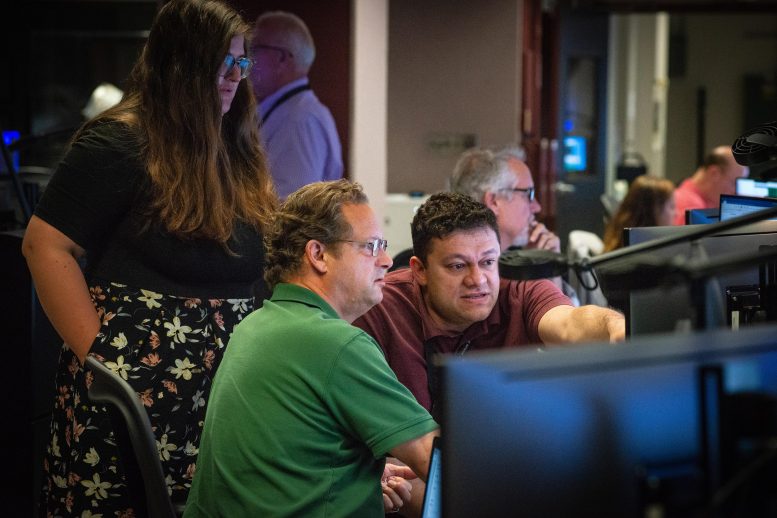
[ad_1]
NASA’s Hubble Space Telescope is back in business, exploring the near and far universe. Scientific instruments have returned to full operation after recovering from a computer anomaly that suspended telescope observations for more than a month.
Scientific observations resumed in the afternoon of Saturday July 17. The telescope’s targets last weekend included the unusual galaxies shown in the images below.
“I am delighted to see that Hubble’s eyes are once again on the universe, once again capturing the kind of images that have intrigued and inspired us for decades,” said NASA Administrator Bill Nelson. “It’s a time to celebrate the success of a team that’s truly dedicated to the mission. Through their efforts, Hubble will continue its 32nd year of discovery, and we will continue to learn from the observatory’s transformational vision.
These snapshots, taken from a program led by Julianne Dalcanton at the University of Washington in Seattle, show a galaxy with unusual extended spiral arms and the first high-resolution glimpse of an intriguing pair of colliding galaxies. Hubble’s other initial targets included globular star clusters and auroras on the giant planet Jupiter.

These images, from a program led by Julianne Dalcanton at the University of Washington in Seattle, demonstrate Hubble’s return to full science operations. [Left] ARP-MADORE2115-273 is a rarely observed example of a pair of interacting galaxies in the southern hemisphere. [Right] ARP-MADORE0002-503 is a large spiral galaxy with unusual extended spiral arms. While most disk galaxies have an even number of spiral arms, this one has three. Credit: Science: NASA, ESA, STScI, Julianne Dalcanton (UW) Image processing: Alyssa Pagan (STScI)
The Hubble payload computer, which controls and coordinates the observatory’s on-board scientific instruments, suddenly shut down on June 13. When the main computer did not receive a signal from the payload computer, it automatically put the Hubble science instruments into safe mode. This meant that the telescope would no longer do science while mission specialists analyzed the situation.
The Hubble team moved quickly to investigate what was plaguing the observatory, which orbiting about 547 kilometers above Earth. Working from mission control at NASA’s Goddard Space Flight Center in Greenbelt, Maryland, as well as remotely due to COVID-19 restrictions, engineers collaborated to determine the cause of the problem.
To complicate matters, Hubble was launched in 1990 and has been observing the universe for over 31 years. To repair a telescope built in the 1980s, the team had to draw on staff knowledge from its long history.
Hubble alumni have returned to support the current team in the recovery effort, lending decades of mission expertise. The retired staff who helped build the telescope, for example, knew the ins and outs of the Science Instrument and Command & Data Handling unit, where the payload computer resides – essential expertise in determining the next steps. recovery steps. Other former members of the team lent a hand by scouring the original Hubble documents, revealing documents 30-40 years old that would help the team chart the course forward.
On June 13, 2021, the Hubble Space Telescope payload computer unexpectedly shut down. However, the Hubble team methodically identified the possible cause and how to compensate for it. Credit: NASA’s Goddard Space Flight Center
“That’s one of the perks of a program that’s been around for over 30 years: the incredible amount of experience and expertise,” said Nzinga Tull, Hubble Systems Anomaly Response Manager at Goddard. . “It has been a lesson in humility and inspiration to engage both with the current team and with those who have moved on to other projects. There is so much dedication to their Hubble teammates, the observatory and the science for which Hubble is famous.
Together, team members new and old went through the list of likely culprits, seeking to isolate the problem to ensure they have a full inventory for the future of the hardware that is still working.
At first, the team thought the most likely problem was a degrading memory module, but switching to backup modules did not resolve the issue. The team then designed and performed tests, which involved turning on Hubble’s standby payload computer for the first time in space, to determine if two other components might be responsible: the hardware of standard interface, which connects communications between the central processing module of the computer and other components. , or the central processing module itself. However, activating the backup computer did not work, eliminating these possibilities as well.
The team then set out to determine if other hardware was involved, including the control unit / science trainer and the power control unit, which is designed to provide constant voltage supply. to the payload computer hardware. However, it would be more complicated to deal with either of these issues and riskier for the telescope in general. Switching to backup drives of these components would also require changing several other hardware enclosures.

Nzinga Tull, manager of Hubble Systems Anomaly Response at NASA’s Goddard Space Flight Center in Greenbelt, Md., Works in the control room July 15 to restore Hubble to full science operations. Credit: NASA GSFC / Rebecca Roth
“The switch required 15 hours of spacecraft control from the ground. The main computer had to be shut down, and a safe mode standby computer temporarily took over the spacecraft. Several enclosures also needed to be powered on that had never been powered on before in space, and other hardware required switching their interfaces, ”said Jim Jeletic, deputy project manager at Hubble at Goddard. . “There was no reason to believe that all of this wouldn’t work, but it’s the team’s job to be nervous and think about anything that could go wrong and how we could compensate for that. The team meticulously planned and tested every little step in the field to make sure they got it right. “
The team proceeded carefully and systematically from there. Over the next two weeks, more than 50 people worked to review, update and monitor the backup hardware transition procedures, test them on a high-fidelity simulator, and conduct a formal review of the proposed plan.
Simultaneously, the team analyzed data from their previous tests and their results indicated that the power control unit was the possible cause of the problem. On July 15, they made the planned passage to the emergency side of the Scientific Instrumentation and Control and Data Processing Unit, which contains the emergency power control unit.
The victory came around 11:30 p.m. EDT on July 15, when the team determined the change was successful. The scientific instruments were then put into working order and Hubble resumed collecting scientific data on July 17. Most observations missed during the suspension of scientific operations will be rescheduled.
This isn’t the first time Hubble has had to rely on backup hardware. The team made a similar change in 2008, returning Hubble to normal operations after another part of the Science Instrument and Command & Data Handling (SI C&DH) unit failed. Hubble’s last servicing mission in 2009 – a much-needed focus championed by former US Senator Barbara Mikulski – then replaced the entire SI C&DH unit, dramatically extending Hubble’s operational lifespan.
Since that maintenance mission, Hubble has made more than 600,000 observations, bringing its total lifespan to over 1.5 million. These observations continue to change our understanding of the universe.

Members of the Hubble operations team work in the control room July 15 to restore Hubble to science operations. Credit: NASA GSFC / Rebecca Roth
“Hubble is in good hands. The Hubble team has once again shown its resilience and prowess in dealing with the inevitable anomalies resulting from the use of the world’s most famous telescope in the harshness of space, ”said Kenneth Sembach, Director of Space Telescope Science Institute (STScI) in Baltimore, Maryland. , which leads the science operations of Hubble. “I am impressed with the team’s dedication and common goal over the past month to get Hubble back up and running. Now that Hubble offers unprecedented views of the universe again, I expect it to continue to amaze us with many more scientific discoveries to come. “
Hubble contributed to some of the most important discoveries in our cosmos, including the acceleration of the expansion of the universe, the evolution of galaxies over time, and the first atmospheric studies of planets beyond our solar system. . His mission was to spend at least 15 years probing the farthest and faintest reaches of the cosmos, and he continues to far exceed that goal.
“The volume of record science that Hubble has delivered is staggering,” said Thomas Zurbuchen, associate administrator of NASA’s Science Missions Directorate. “We have so much to learn from this next chapter in Hubble’s life – alone and with the capabilities of other NASA observatories. I couldn’t be more excited about what the Hubble team has achieved over the past few weeks. They have met the challenges of this process head-on, ensuring that Hubble’s days of exploration are far from over.
[ad_2]
Source link